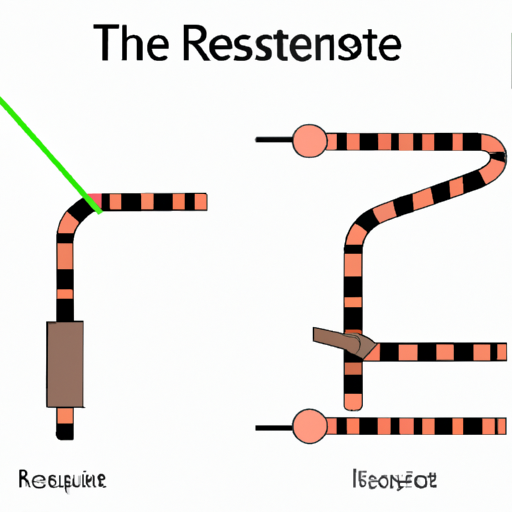An article to help you understand what is a resistor 2
The Evolution of Renewable Energy: A Path Towards a Sustainable Future
I. Introduction
As the world grapples with the pressing challenges of climate change and environmental degradation, the importance of renewable energy has never been more pronounced. Renewable energy refers to energy derived from natural sources that are replenished at a faster rate than they are consumed. This includes solar, wind, hydro, biomass, and geothermal energy. The transition to renewable energy is crucial in reducing greenhouse gas emissions, promoting energy security, and fostering sustainable economic growth. This article will explore the historical context of energy sources, the various types of renewable energy, the role of technology, economic implications, global perspectives, and future trends in renewable energy.
II. Historical Context of Energy Sources
A. Traditional Energy Sources: Fossil Fuels and Their Impact
For centuries, fossil fuels—coal, oil, and natural gas—have been the backbone of global energy consumption. The Industrial Revolution marked a significant increase in fossil fuel usage, leading to unprecedented economic growth. However, this reliance on fossil fuels has come at a steep environmental cost. The burning of fossil fuels releases significant amounts of carbon dioxide and other greenhouse gases into the atmosphere, contributing to global warming and climate change. Additionally, fossil fuel extraction and transportation have led to habitat destruction, oil spills, and air and water pollution.
B. The Emergence of Renewable Energy
In response to the environmental consequences of fossil fuel consumption, renewable energy began to gain traction in the late 20th century. Early uses of renewable energy can be traced back to ancient civilizations that harnessed wind and water for power. However, it was not until the 1970s energy crisis that significant investments were made in renewable technologies. Technological advancements, such as improved solar panel efficiency and wind turbine design, have paved the way for modern renewable energy solutions.
III. Types of Renewable Energy
A. Solar Energy
Solar energy is harnessed from the sun's rays using photovoltaic (PV) cells or solar thermal systems. PV cells convert sunlight directly into electricity, while solar thermal systems use sunlight to heat a fluid that produces steam to drive a turbine. The benefits of solar energy include its abundance, low operating costs, and minimal environmental impact. However, challenges such as high initial costs, land use, and energy storage remain.
B. Wind Energy
Wind energy is generated by converting the kinetic energy of wind into electricity using wind turbines. These turbines can be installed onshore or offshore, with offshore wind farms often producing more energy due to stronger and more consistent winds. The advantages of wind energy include its low emissions and cost-effectiveness. However, challenges such as noise, visual impact, and the threat to wildlife must be addressed.
C. Hydropower
Hydropower is one of the oldest and most widely used forms of renewable energy. It generates electricity by harnessing the energy of flowing water, typically through dams. While hydropower is a reliable and efficient energy source, it can have significant environmental impacts, including habitat disruption and changes to water quality and flow.
D. Biomass and Biofuels
Biomass refers to organic materials, such as plant and animal waste, that can be used as fuel. Biofuels, derived from biomass, can replace fossil fuels in transportation and heating. While biomass and biofuels can reduce greenhouse gas emissions, concerns about land use, food security, and emissions from combustion must be considered.
E. Geothermal Energy
Geothermal energy harnesses heat from the Earth's interior to generate electricity or provide direct heating. This renewable energy source is highly reliable and has a small land footprint. However, its potential is limited to regions with significant geothermal activity, and the initial costs of drilling and infrastructure can be high.
IV. The Role of Technology in Renewable Energy
Technological advancements play a crucial role in the growth and efficiency of renewable energy. Innovations in energy storage, such as lithium-ion batteries, have made it possible to store excess energy generated during peak production times for use during periods of low production. Smart grid technology enhances energy distribution by allowing for real-time monitoring and management of energy flow, improving efficiency and reliability. Additionally, artificial intelligence and data analytics are being utilized to optimize energy use, predict demand, and enhance the integration of renewable energy sources into existing grids.
V. Economic Implications of Renewable Energy
The transition to renewable energy has significant economic implications. The renewable energy sector has become a major source of job creation, with millions of jobs in manufacturing, installation, and maintenance. As technology advances and production scales up, the cost of renewable energy continues to decline, making it increasingly competitive with fossil fuels. Government policies and incentives, such as tax credits and subsidies, play a vital role in promoting renewable energy adoption and driving investment in clean technologies.
VI. Global Perspectives on Renewable Energy
A. Case Studies of Countries Leading in Renewable Energy Adoption
Several countries have emerged as leaders in renewable energy adoption. Germany's Energiewende (energy transition) policy aims to shift the country towards a sustainable energy system, with significant investments in solar and wind energy. China has become the world's largest producer of solar panels and wind turbines, investing heavily in renewable energy infrastructure. The United States has also made strides in renewable energy initiatives, with states like California leading the way in solar energy adoption.
B. Challenges Faced by Developing Countries in Adopting Renewable Energy
While many developed countries are making progress in renewable energy adoption, developing countries face unique challenges. Limited access to financing, inadequate infrastructure, and political instability can hinder the transition to renewable energy. However, international cooperation and investment can help overcome these barriers and promote sustainable energy solutions in developing regions.
VII. Future Trends in Renewable Energy
A. Predictions for Renewable Energy Growth
The future of renewable energy looks promising, with predictions indicating that it will continue to grow rapidly. According to the International Energy Agency (IEA), renewable energy sources are expected to account for a significant portion of global energy consumption by 2040.
B. The Role of International Agreements
International agreements, such as the Paris Agreement, play a crucial role in shaping the future of renewable energy. These agreements aim to limit global warming and promote sustainable development, encouraging countries to invest in clean energy solutions.
C. Innovations on the Horizon
Innovations such as floating solar farms, advanced nuclear technology, and enhanced geothermal systems are on the horizon, promising to further diversify and enhance the renewable energy landscape. These technologies have the potential to increase energy production while minimizing environmental impacts.
VIII. Conclusion
The transition to renewable energy is not just a necessity; it is an opportunity to create a sustainable future for generations to come. As we face the challenges of climate change and environmental degradation, the importance of renewable energy cannot be overstated. Individuals, businesses, and governments must work together to promote the adoption of renewable energy solutions, invest in innovative technologies, and support policies that foster a sustainable energy future. By embracing renewable energy, we can pave the way for a cleaner, healthier planet and a more sustainable economy.
IX. References
1. International Energy Agency (IEA). (2021). World Energy Outlook 2021.
2. REN21. (2021). Renewables 2021 Global Status Report.
3. U.S. Department of Energy. (2020). Renewable Energy: A Key to a Sustainable Future.
4. German Federal Ministry for Economic Affairs and Energy. (2020). The Energiewende: A Policy for the Future.
5. World Bank. (2021). Renewable Energy in Developing Countries: Opportunities and Challenges.
This article provides a comprehensive overview of the evolution of renewable energy, highlighting its importance, types, technological advancements, economic implications, global perspectives, and future trends. By understanding the significance of renewable energy, we can collectively work towards a sustainable future.






